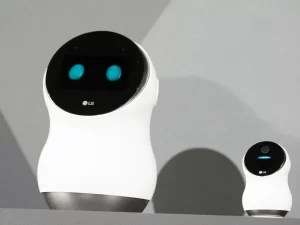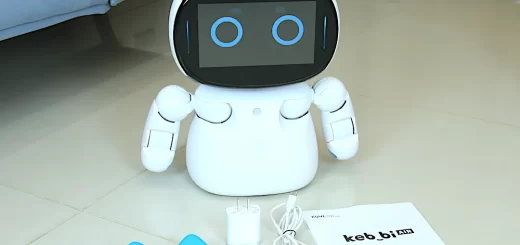Hub robot review, types, advantages, disadvantages and features
The hub robot can manage and coordinate tasks for other robots in the network, increasing efficiency and reducing redundancy. Hub robots can gather data from all connected robots, providing valuable insights for optimization and decision-making. The hub serves as a central communication point, ensuring smooth information flow between robots.
Hub robot
“Hub” refers to a central robot in a network of robots or a robot that acts as a central connection point for other devices. It’s also possible “Hub robot” is a fictional robot from a video game, book, or movie. “Hub” could be a general term used for a robot that acts as a central connection point or coordinator for other robots or devices.
For a central robot in a network, the focus is on control, data, and scalability, while a smart home hub offers convenience, automation, and remote access, but with concerns about compatibility, security, and internet dependence.
Home Hub Robots: These robots, like the Amazon Echo or Google Home, can control smart devices in your house, like lights, thermostats, and some appliances. They can act as a central information hub, playing music, answering questions, and ordering takeout!
In large factories, Robots are sometimes used to coordinate the work of other robots. These hub robots might not directly interact with physical objects, but instead manage tasks and keep everything running smoothly.
Space Hub Robots: The International Space Station (ISS) uses a robotic arm called Canadarm2 to move equipment and supplies around the station. This robotic arm acts as a hub, essential for keeping the space station operational.
Hub in video games: In gaming, a Hub is often a central location where players can access different areas, levels, or quests. You might be encountering a robot companion or character associated with a Hub area in a specific game.
Hub as Central Robot in a Network
Hub robot advantages
The hub robot can manage and coordinate tasks for other robots in the network, improving efficiency and reducing redundancy. It can collect and analyze data from other robots, providing valuable insights for optimization and decision-making. The network can easily expand by adding more robots, with the hub robot handling communication and coordination.
The hub robot simplifies managing multiple robots by providing a single point to issue commands, set schedules, and monitor performance. It optimizes tasks by coordinating robot activities and preventing collisions. Hub can gather data from all connected robots, enabling better decision-making and identifying areas for improvement.
Disadvantages of Hub robots
If the hub robot malfunctions, the entire network might be affected and all connected robots could be inoperable. Designing and maintaining a central hub robot with the processing power to manage a complex network can be challenging, especially for a large network of robots. The network’s capabilities might be restricted by the hub robot’s programming.
The hub robot requires additional hardware and software compared to simpler, individual robot control systems. Maintaining a central hub robot with the processing power to manage a network can be complex and expensive. Adding new robots to the network might require upgrading the hub robot’s capabilities.
A smart home hub allows you to control all your compatible smart devices from one app, simplifying automation and scheduling. The hub can unlock features unavailable on individual devices, creating a more integrated smart home experience. Some hubs offer additional security features as a central point for managing user access and device communication.
Hub Robot as a Smart Home Hub:
Advantages of Hub robots
Hub Robot connects and controls various smart home devices (lights, thermostats, etc.) from a single app or voice interface, simplifying routines and automating tasks, making your home life more comfortable. Hub Robot allows scheduling and automation for lights, thermostats, appliances, etc., leading to potential energy savings.
Hub Robot can control smart home devices from anywhere through a smartphone app, enhancing convenience and security. It can integrate with smart locks, cameras, and sensors for better home security monitoring.
Disadvantages of Hub robots
A central hub could be a vulnerability if hacked, potentially compromising connected devices. The hub and connected devices might become inaccessible if the internet connection goes down. If the hub malfunctions, you might lose control of all your connected smart devices. A compromised hub could give someone access to all your smart home devices.
Not all smart devices work with every hub, requiring research to ensure compatibility before purchase. Disruptions in Wi-Fi can affect the hub‘s ability to communicate with devices. Sharing data with the hub manufacturer raises privacy concerns, especially regarding sensitive information like home security footage.
You can follow Science Online on Youtube from this link: Science online
You can download the Science Online application on Google Play from this link: Science Online Apps on Google Play
Sophia robot review, features, use, advantages and disadvantages
Top trending topics on Sophia robots and Can Sophia Destroy humans
Educational robotics, Robot teachers, Social robots review, features advantages & drawbacks
Humanoid robots use, risks, advantages, and disadvantages
Advantages and disadvantages of using robots in our life
Robot teachers use, advantages and disadvantages
Boston Dynamics Atlas review, advantages and features, How does Atlas robot work?
Pepper robot review, features and What can Pepper do for your business?




